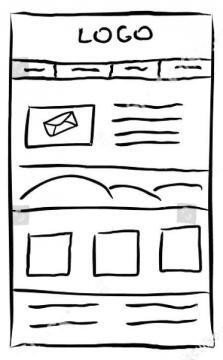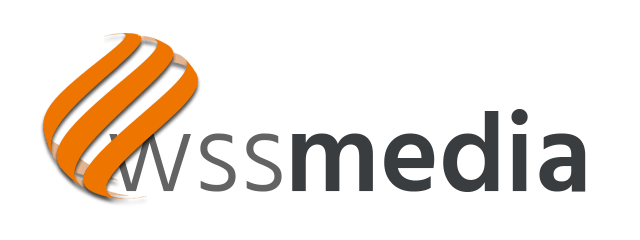How Do We Build A Custom Built Website?

Helping You To Understand Your Website Build
All "Custom Built Websites" are constructed using a series of rows, blocks and elements to form each web page structure. The page structure sits between your header and footer; you can view headers and footers on this linked page. Here we will show you how this works, and it'll help you understand how we arrive at your website cost.
As web designers, we like to talk to the client first to gain an insight into what they want. Once we have grasped the general idea, we draw out a simple line drawing as seen in image A for each page. This method, known as 'wireframe design' gives a simple road map of what's required on each page. When that works for the client, we can then price the pages using the number of pages, rows, blocks and elements required.
However, if you prefer, you can sketch out each page of your website as we describe above. This will give you an accurate total of all the components you need. When finished, you can then go to our custom built website package page and see which package closely fits your website requirements.
Of course, we are more than happy to discuss your project with you over the phone. We can then explain more in-depth as to the costs involved for your new website design.
Building A Custom Built Website
See below an example of a completed two-row design and the components that make up those two rows.
A Two Row Website Page Construction
Below is our two-row example that would sit within your page header and footer. Within a page design, you can have any amount of "Rows". There are many reasons for introducing new rows to a page design. One would be to change the background colour or image to make the content of that row stand out from the other rows. Another reason may be if you want to change the row layout from three columns to four etc.
Don't be afraid to use as many rows as the design dictates. You can see the impact of different row designs in our two-row example below. Within 1 "Row" you can have as many "Blocks" as you need and within 1 "Block" you can have as many "Elements" your design requires. Again, we demonstrate in the example design below.
The two rows we have below our design show how we construct the rows using our "Rows, Blocks and Elements" (CLICK HERE TO SEE). A "Row" is a container that can be styled in any way with colour, or it could have an image or even a video as a background.
More On Rows, Blocks & Elements
In our design, we have used colour in "ROW 1" and in "ROW 2" we have used an image background behind the white text to throw forward our information. Inside our "ROW 1" we have four "Blocks" which can be styled in the same way as our rows. The blocks are like columns and give us control over their width height and padding around them. Inside our "Blocks" live our "Elements".
Now "Elements" are our exciting active page content, and can be anything such as text, images, maps, videos, galleries, forms or anything we need to display on our website.
In this case in our "ROW 1," we have 4 "elements", one in each of our four "Blocks". These particular "Elements" we call "Call Outs". Each "Call Out" consists of an image at the top, a heading under the image, a brief textual description and a link at the end to encourage people to "Read More".
In our "ROW 2" we have 1 "Block" with 1 "Element" inside. In this row, the "Element" is a simple text editor that allows us to apply the text to our pages just like using Microsoft Office Word.
All this started from a simple little hand-drawn layout as in "Image A" at the beginning. From that, we can accurately tell you that the single "ROW 1" example you see will cost $26.10 and this simple text "ROW 2" will cost $11.25 when hosted with WSS Media. So there you go we have two rows of a website started for just $37.35.
Building A Custom Built Website
Give us a call on 1800 001 600 - our team can quote your new website project
Our Services
Os moles pendebat. Sidera fuerat. Ulla solum homo dei. Phoebe nec temperiem gravitate diffundi unus perpetuum media.
Get In Touch
Os moles pendebat. Sidera fuerat. Ulla solum homo dei. Phoebe nec temperiem gravitate diffundi unus perpetuum media.
ROW 1
ELEMENT 1
ELEMENT 1
ELEMENT 1
ELEMENT 1
ROW 2
ELEMENT 1

